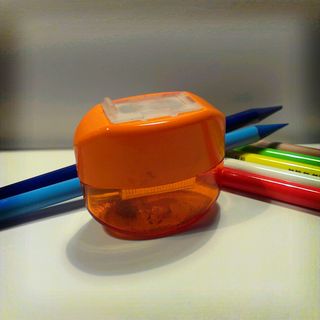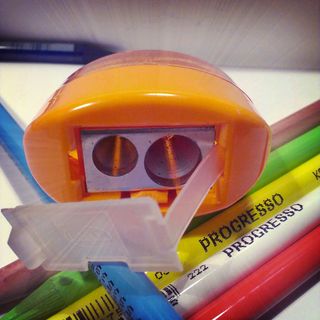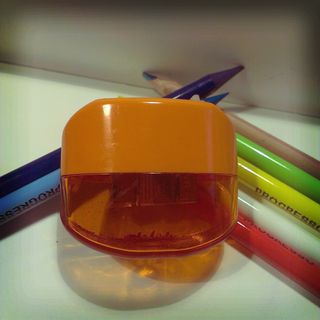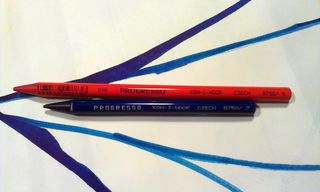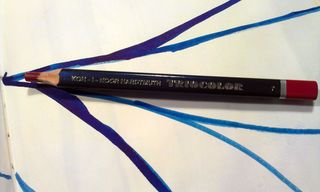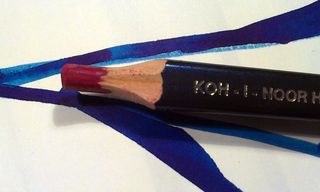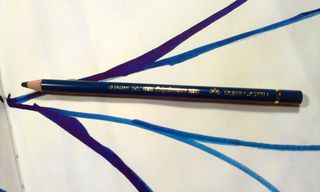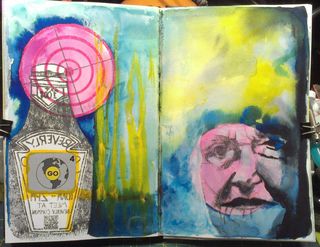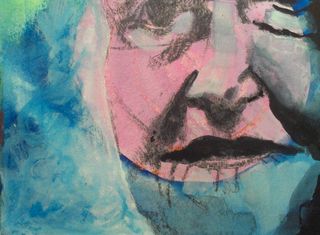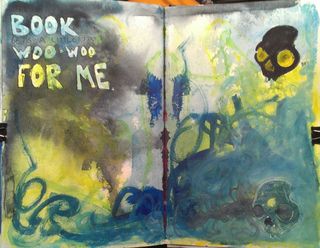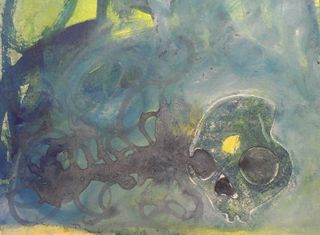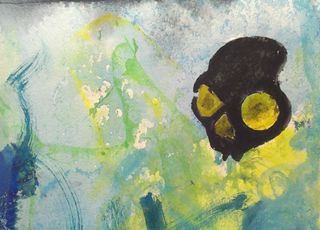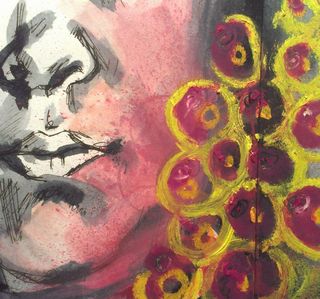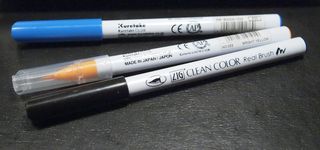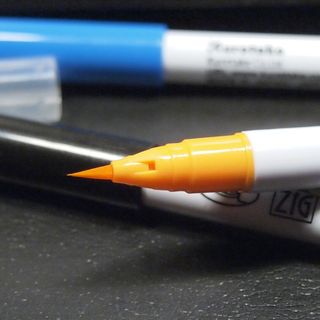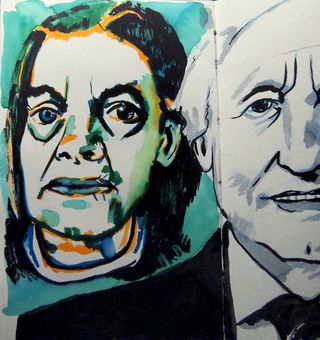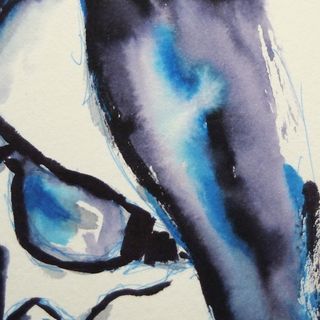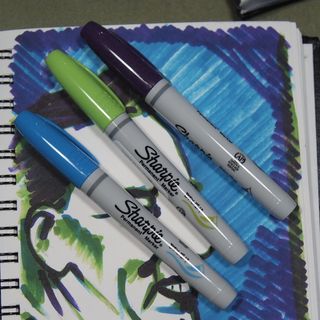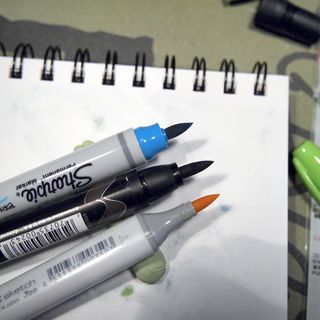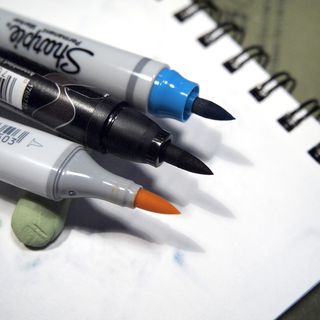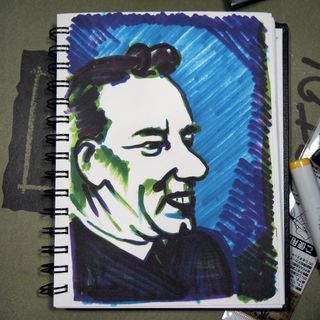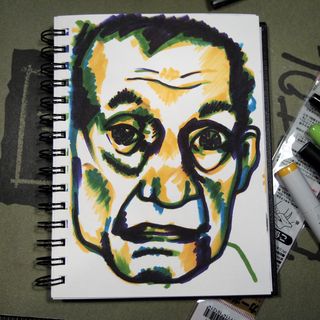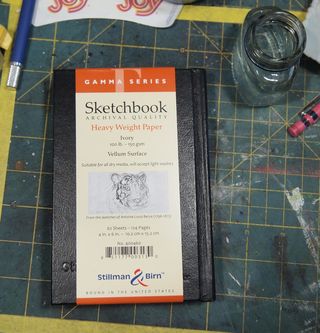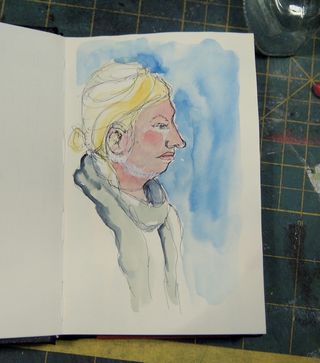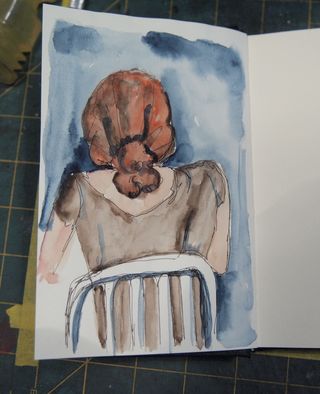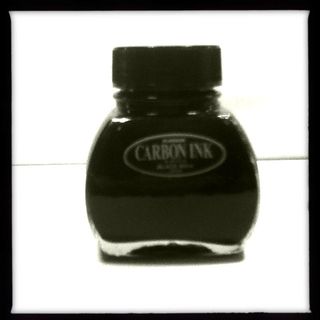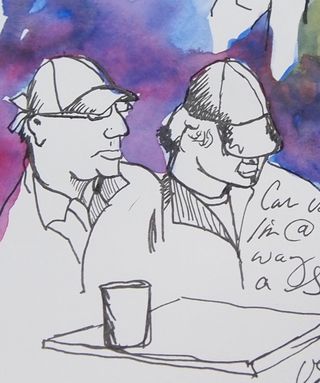Pens tested:
- Sharpie Brush Pens- Green, Purple, Blue
- Copic Cad Yellow Brush Pen
- Zig Clean Color Brush Pen: Bright Yellow, Prussian Blue, Green
- Uniball Signo DX .28 Bright Blue, Black .18, .28, .38
- Several Create-a-color 5.5mm Leads
Method:
I drew lines, scribbles, and a block of color on acid free archival
paper. The page was cut in half. the loose page was placed in a south
facing window that gets full sun for the majority of the day.I placed
the sheet in the window on August 30th, 2012. I took it down on
September 13th, 2012.

Let’s
start with the good. There was no color shift in any of the
Create-a-color leads. No worries there. The Uni-ball pens also had no
color shift, not even the bright blue color. The gris Nuage ink by J
Herbin also showed no signs of color shifting. This is a second test for
this ink. I like to affirm my previous tests, just in case.
The
bad. Let’s start with the Sharpies. Sharpie makes no lightfastness
claims. They don’t even bother with claiming their markers are archival.
No claims, no surprises. The green had major color loss. The purple was
mostly magenta after 2 weeks. The blue showed off some major color loss
and change. This was all expected. These are not lightfast. Do not
consider it archival and do not use it in finished art.
The
next on my list of bad is the Copic Cad Yellow marker. In the art world
Cad Yellow is not considered a fugitive color. In fact if you find a
painting with cad yellow in it from 200 years ago, that color is likely
to be still true to the day it was placed, depending on where it was
stored yada yada yada. The copic yellow marker had a major color shift
in 2 weeks and lost much of it brightness. What was left was a pale
yellow ghost. In some areas, where I’d had a light touch the color was
completely gone. The layered areas also showed color change and loss.
The Copic marker is not lightfast. Do not consider it archival, do not
use it in finished art.
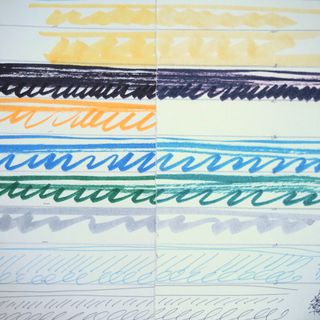
The
next series of markers that are in the bad category were the Zig Clean
Color Brush markers. Zig makes a great deal of archival markers for the
scrapping market. I had to test them. In 2 weeks the color of the bright
yellow was completely gone. As in a shadow remained, as in you couldn’t
tell a color had been there, unless you already knew. The Prussian
blue and the green showed a great deal of color shift and loss. The
black, perhaps the most disappointing of all, turned purple and was well
on it’s way to disappearing. Zig does not advertise the Clean Color
markers as archival, light fast or even acid free; simply watebased. As
such I’m sure I can say with confidence that you shouldn’t consider them
any of the above either. Again, don’t use these in finished art pieces.
What
does this all mean? You can go ahead and use these in your art journal
and sketchbook- any place that will be kept out of sunlight, but be
aware that these could shift color if exposed to any strong sunlight,
really for any period of time. Let’s face it, even in the summer
Massachusetts sun is not considered all that tough and tougher pigments
and dyes often outlast it. I’d also caution you to be aware of buying
art from people who use Copics in their finished pieces, they were
initially made for the marketing world, where finished art is often
tossed after it’s been photographed. The markers did not need to be
lightfast. Now that people are using them for other art, Copic should
really consider making their markers lightfast.
